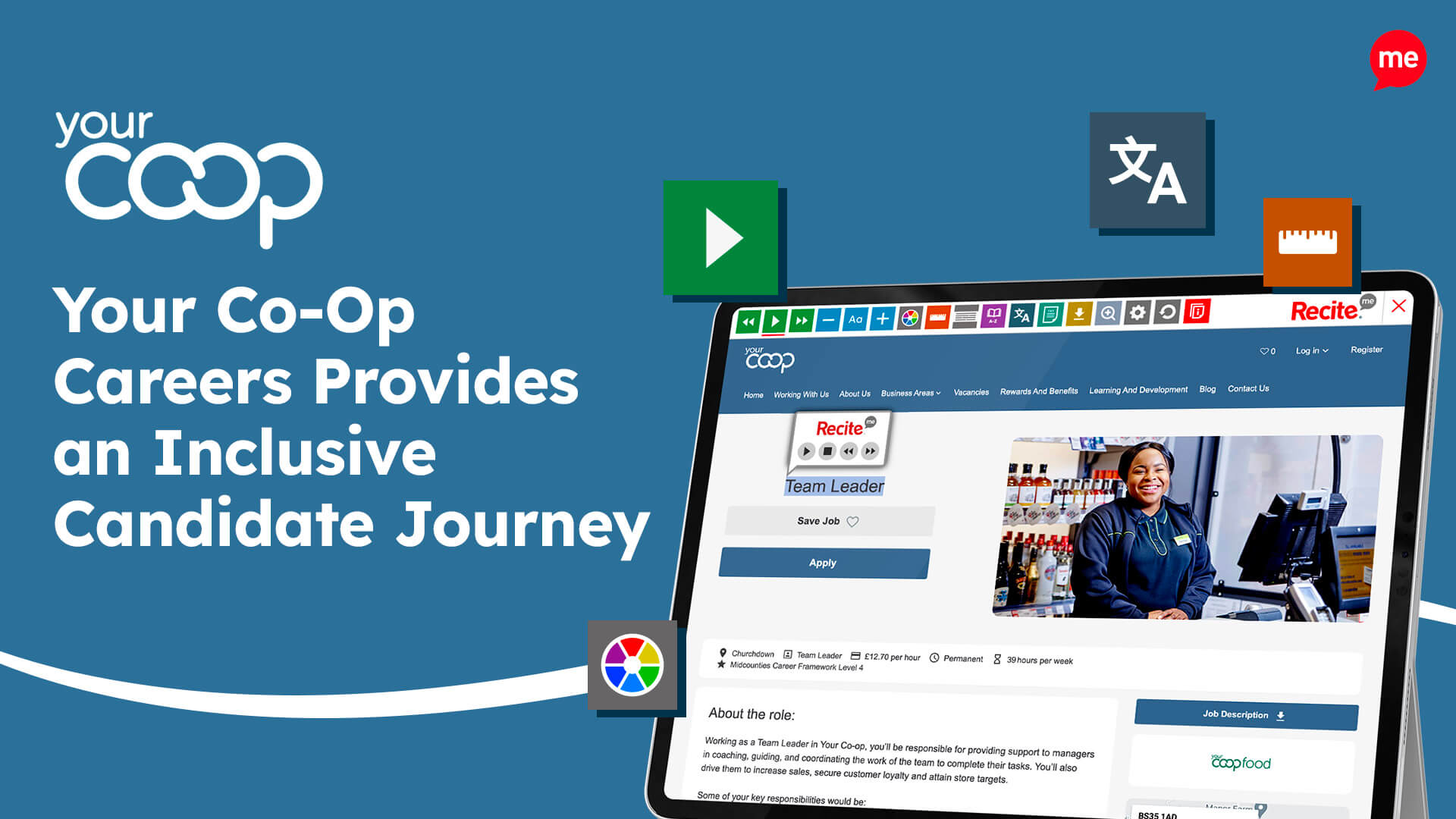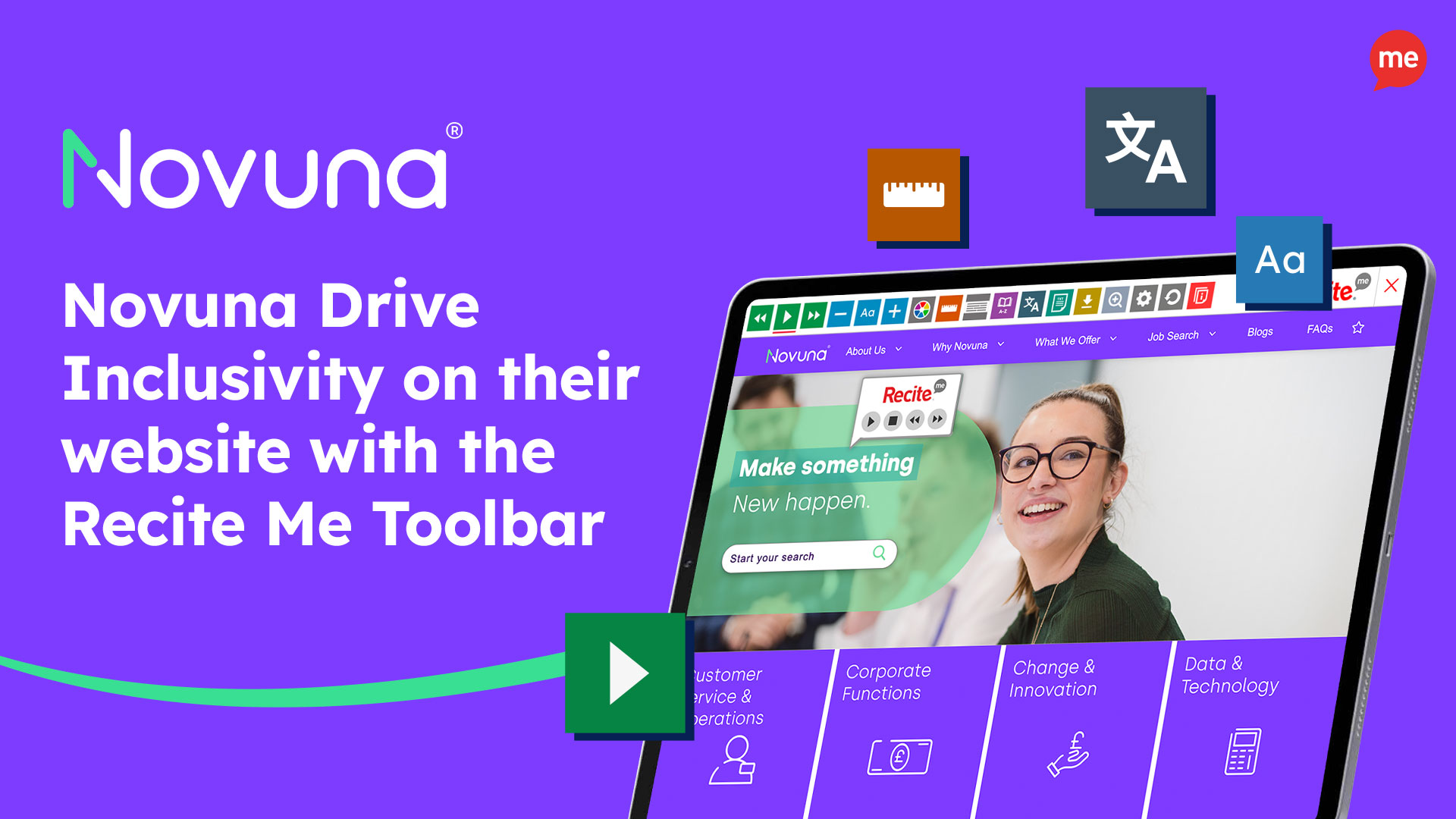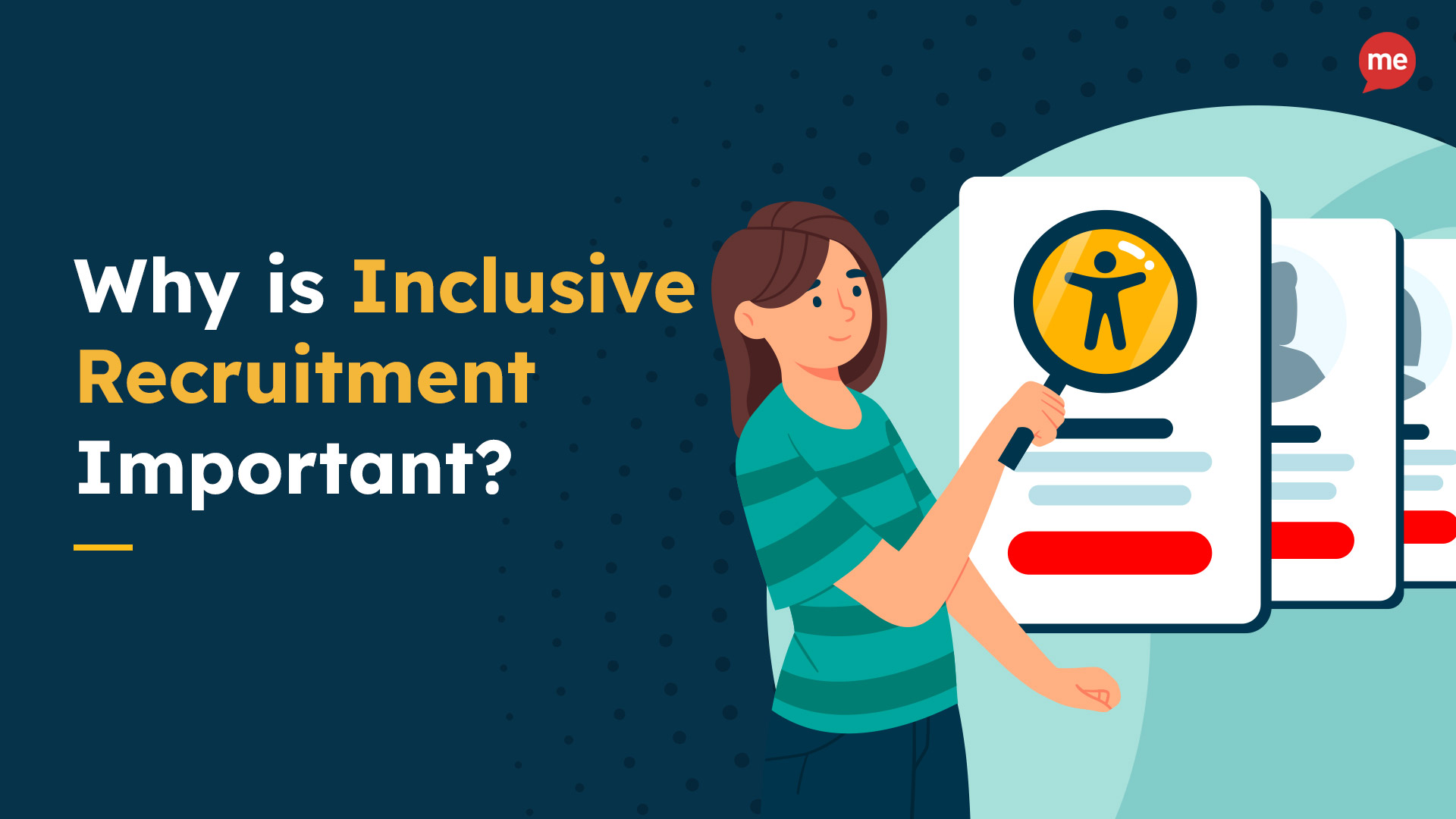Our first ‘What Does Accessibility Mean to Me?’ awareness week is well underway, and it has been amazing to hear from so many different people across a variety of industries. Today we are shining a spotlight on the recruitment sector – we caught up with Jade Haase, Head of Marketing at Murray McIntosh to discuss all things accessibility.
Launched in 2015, Murray McIntosh is a recruitment agency who specialise in Engineering and Policy, Public Affairs & Comms sectors. They are committed to diversity and inclusion, as part of this commitment they provide Recite Me assistive technology on their website to enable an inclusive online experience. Read our Q&A with Jade below.
1. Who are you?
Jade Brar-Haase, Head of Marketing at Murray McIntosh
2. What does accessibility mean to you?
In all honesty, if you had asked me before my subsequent research and prior to joining MMA, I would have focussed on issues surrounding physical accessibility. Now that I have started my own learning journey, I’d say that accessibility is about making all opportunities, processes and both physical & virtual spaces readily available/accessible for all.
3. Why is accessibility important for the recruitment sector?
Before we start examining working environments and their inclusivity processes, which is obviously of paramount importance, we need to look at the journey of the job seeker and employer in getting there.
Firstly, the landscape has changed. As a society, we have become increasingly more conscious of the individuals that make up our local communities and as such we now expect businesses to create processes that cater for all. The recruitment process should be no different. For many job seekers, just knowing that a prospective employer has worked – or is working – to create a fair and accessible recruitment process can make them far more attractive to work for. At Murray McIntosh, the recruitment process is so much more than “finding and placing” candidates, we strategically partner with our clients on a long-term basis to improve their employer brand, hiring processes and D&I policies.
Secondly, accessibility is important to all sectors. If we consider the ‘social model’ as a point of reference, you can’t help but become more aware of the societal barriers that have been created. Once identified, you can begin to remove them and/or consider the appropriate solutions to do so. By doing this you will have taken steps in creating an accessible organisation and perhaps an equitable culture that embraces the breadth and depth of our communities.
With our clients, in particular, we have seen a cultural shift that has spearheaded a mission to “represent the communities they serve”. Hiring and departmental managers are actively making accessibility, inclusion and diversity part of their recruitment brief to make this mission a reality. Clients want clear, tangible actions to ensure that all candidates can apply and that they will be considered fairly throughout the process.
4. What type of barriers do job seekers/applicants face (online and offline)
It is surprising to see just how many companies don’t have the basics of an accessibility bar integrated on their website or careers page at the least. This all-singing all-dancing tool is a really simple way to offer a more accessible online journey for so many people.
The next stage is the job description itself. Without knowing it, we are all likely to adopt some bias in our writing style. That doesn’t mean we are intentionally excluding people, it’s just a disadvantage of human nature. We are all different, with diverse experiences behind us, which in turn impacts our style of communication. Investing in an artificial intelligence tool to remove biases such as gender, race, ageism and sexuality is a must for companies that are serious about creating a more inclusive process. As an example, did you know that a job description containing lengthy bullet points is more likely to result in fewer female applications? There is so much research into biased language and its link to human behaviour, that it would be impossible to become an expert overnight, but the need to change is now. So, finding a reputable AI tool that can analyse and correct this communication for you is a no brainer.
Ultimately, much of this is opinion based. It’s easy to get siloed into finding the perfect mix of technologies to support each impairment, but many disabled people choose not to use assistive technology because they feel more comfortable using their adapted process for a non-accessible world.
5. How do you think the pandemic has affected organisations’ consideration for online accessibility?
At the start of the pandemic, many businesses were essentially forced to create a work from home solution. While the process to finesse those parameters is lengthy, experimental and most likely still ongoing, many organisations found surprising benefits to the new method. Some even reported an increase in productivity rather than the anticipated decline.
The unprecedented restrictions placed on businesses resulted in a much-needed evolution of workplace policies and a critical review of the motivations behind them. Many companies have welcomed ‘work from home’ to stay as part of a hybrid working scheme, or in some cases as a permanent move.
While working from home isn’t for everybody, it has made employment more accessible for those that were previously unable to travel into a central office location for various reasons. Another benefit for businesses is that they are more open to engaging talent from a larger catchment area, which has increased the number of high-calibre and diverse applicants, boosting productivity exponentially.
6. Can you share an example of providing support for someone with additional needs?
Yes, we can, but it probably isn’t the answer you’d expect where we list a host of tools or prescribe an innovative process.
As a recent example, we had a candidate that was dyslexic and had ADHD. We didn’t create or adapt the process in any way.
The whole point of accessibility is to allow people to experience the same journey as those without impairments. Often it is about creating a platform, a safe and confidential environment, in which candidates are able to talk about their impairments and resulting needs and ensuring that this is something that is reflected Client-side.
So, in this example that is exactly what we did. Equipped with a variety of in-house accessibility tools and training, our team were able to work with the client to educate and advise them as to additional considerations for the process. The wish of the candidate was for the interview panel to be aware of their impairments, in the event of any related behaviour, but without the need to address the impairments during the process – thus having the same experience as everybody else. At the time of the interview, both the client and candidate were prepared, relaxed and ready for a typical interview around suitability, skillset and cultural fit. The candidate thrived in the interview and was offered the role.
The example shared reflects what many disabled people are looking for in both the recruitment process and in everyday life. Accessibility doesn’t necessarily mean acquiring all the tech and tools possible, it starts with taking the time to treat each person as an individual, understanding their impairment and reacting under the guidance and wishes of the impaired individual.
If you want to take your own website accessibility to the next level, then be sure to check out our web content accessibility checker.






